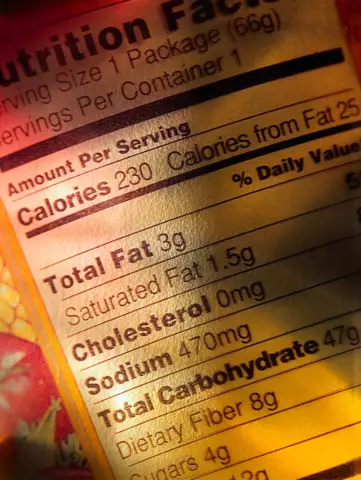- Author Rachel Wainwright [email protected].
- Public 2023-12-15 07:39.
- Last modified 2025-11-02 20:14.
Beef tongue
Beef is the meat of cattle, which includes bulls and cows of various ages. There is evidence that the first ancestors of modern cattle were domesticated in Transbaikalia about eight thousand years ago.

Beef is classified into the second, first and highest grade. The dorsal and chest parts, as well as fillet, rump, rump and rump belong to the highest grade. The first grade includes the shoulder and shoulder parts of the carcass, and the second grade includes the shanks, front and back, and the cut. The most valuable is the meat of beef cattle. The meat of immature young animals is especially appreciated.
Beef liver, heart, brains, kidneys and beef tongue belong to the first category of pulp by-products. Beef tongue is rightfully called a delicacy. It consists of muscle tissue covered with an outer shell. The tongue can weigh from two hundred grams to two kilograms. This delicacy is carefully processed before it goes on sale. Lymph nodes, fat and connective tissue are removed from it.
Composition and calorie content of beef tongue
One hundred grams of the tongue contains 68.8 g of water, 150 mg of cholesterol, 4.8 g of saturated fatty acids and about one gram of ash. There are a lot of proteins in the tongue (about 16%). This product contains a lot of vitamins. One hundred grams of the tongue contains 7.7 mg of vitamin PP, 0.4 mg of vitamin E, 4.7 mg of vitamin B12, 6 μg of vitamin B9, 0.2 μg of vitamin B6, 2 μg of vitamin B5, 0.3 μg of vitamin B3 and 0, 12 mcg vitamin B1. The tongue also contains 9 μg of tin, 16 μg of molybdenum, 19 μg of chromium, 0.053 mg of manganese, 94 mg of copper, 251 mg of iron, 224 mg of phosphorus, 255 mg of potassium, 100 mg of sodium, 19 mg of magnesium and 8 mg of calcium.
The calorie content of beef tongue is 173 kcal per hundred grams of product.
The benefits of beef tongue
This gourmet by-product promotes the synthesis of hormones and amino acids, and also activates the production of insulin, helping to normalize the concentration of sugar in the blood. That is why the benefits of beef tongue for diabetes are obvious. An important benefit of beef tongue is a beneficial effect on the human nervous system.
The calorie content of beef tongue is relatively low. There is no connective tissue in the tongue, so it can be classified as an easily digestible food. Doctors recommend eating boiled beef tongue as often as possible for anemia, peptic ulcer disease, pregnancy, gastritis. It is believed that regular consumption of the delicacy helps to cope with migraines and insomnia.
One hundred grams of this offal contains 150% of the daily value in vitamin B12, which regulates carbohydrate and fat metabolism in the body. A small piece of tongue satisfies one third of the body's daily need for vitamin PP, and for zinc - 40%.
The harm of beef tongue
The amount of fat in beef tongue is three times more than in the liver. Beef tongue can harm the kidneys and liver only in case of excessive use.
To reduce the harm of the beef tongue, it is necessary to remove the skin from it before boiling.
In addition, the harm of the beef tongue can manifest itself if hormones, pesticides, antibiotics (most often through feed) were injected into the meat of the animal.
Ways to cook beef tongue
Many culinary experts around the world appreciate this offal for its delicate, refined taste and high nutritional qualities. National dishes from the language are present in Polish, Georgian, Russian, Chinese, Tunisian cuisines. In gastronomy, there are several options for preparing this delicacy, but boiled beef tongue is the most popular.
Boiled beef tongue is extraordinarily tender and very soft. It should be cooked for at least three to four hours. When boiled, it may swell slightly and increase in size. To add additional taste and aroma to the finished product at the end of boiling, it is recommended to add various spices and spices to it, in particular, black pepper and bay leaves.

The tongue also tastes excellent when stewed. You can stew it in sour cream, cream and even wine. The delicacy can also be stuffed, fried in batter or breadcrumbs, or baked. This product is widely used in the production of smoked meats, sausages, canned food and ham.
It is very useful to cook aspic from the tongue. To do this, you must first prepare the tongue, rinse it, fill it with water and add bay leaf, pepper, onion and carrots. It should be cooked for two to three hours over low heat. The cooked boiled beef tongue should be chilled, peeled and cut into thin slices. Strain the cooled broth, pour gelatin and leave for an hour to swell. Then heat the broth to dissolve the gelatin. Put pieces of tongue on a dish, add carrots and parsley. Then pour everything with broth and leave in the refrigerator until it solidifies.
YouTube video related to the article:
Found a mistake in the text? Select it and press Ctrl + Enter.






